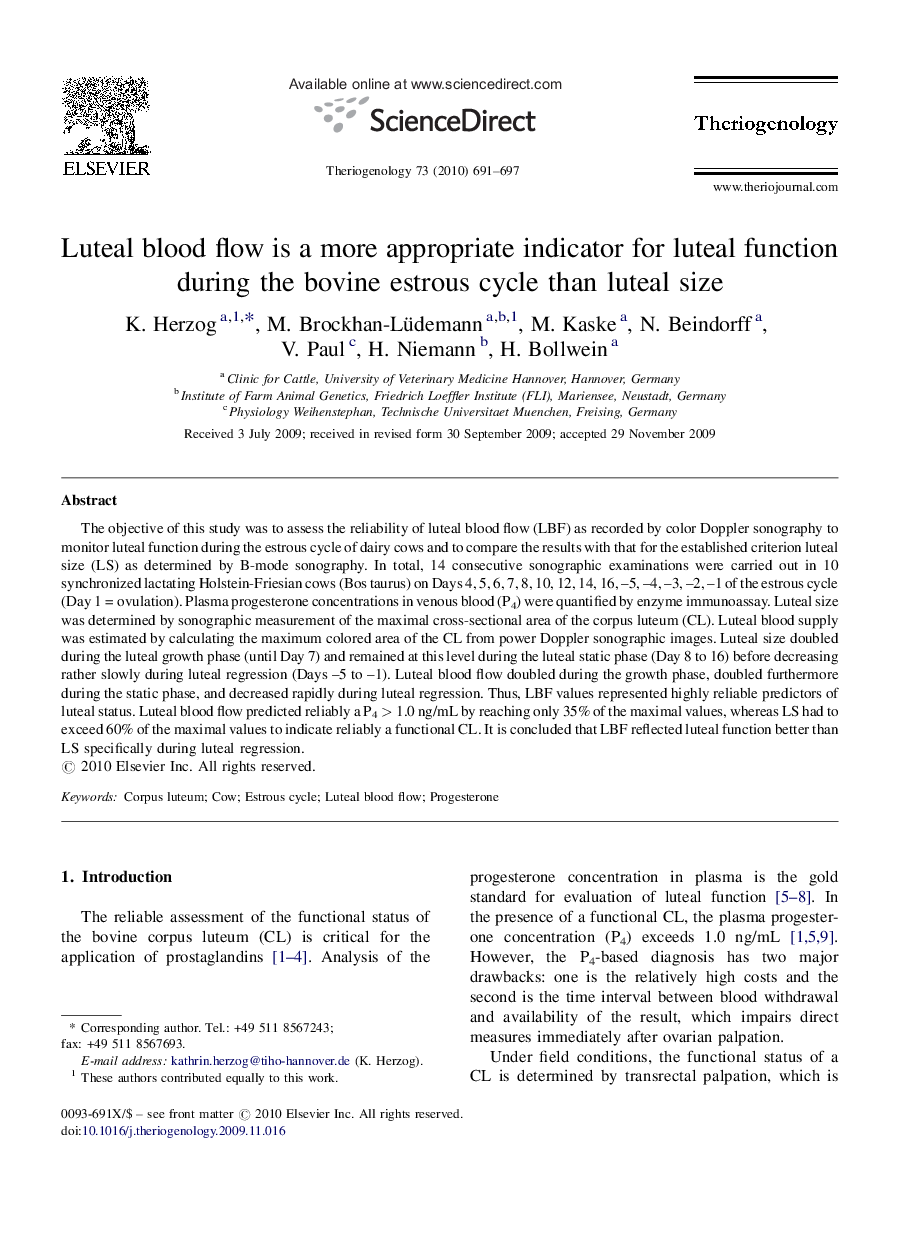| Article ID | Journal | Published Year | Pages | File Type |
|---|---|---|---|---|
| 2095615 | Theriogenology | 2010 | 7 Pages |
The objective of this study was to assess the reliability of luteal blood flow (LBF) as recorded by color Doppler sonography to monitor luteal function during the estrous cycle of dairy cows and to compare the results with that for the established criterion luteal size (LS) as determined by B-mode sonography. In total, 14 consecutive sonographic examinations were carried out in 10 synchronized lactating Holstein-Friesian cows (Bos taurus) on Days 4, 5, 6, 7, 8, 10, 12, 14, 16, –5, –4, –3, –2, –1 of the estrous cycle (Day 1 = ovulation). Plasma progesterone concentrations in venous blood (P4) were quantified by enzyme immunoassay. Luteal size was determined by sonographic measurement of the maximal cross-sectional area of the corpus luteum (CL). Luteal blood supply was estimated by calculating the maximum colored area of the CL from power Doppler sonographic images. Luteal size doubled during the luteal growth phase (until Day 7) and remained at this level during the luteal static phase (Day 8 to 16) before decreasing rather slowly during luteal regression (Days –5 to –1). Luteal blood flow doubled during the growth phase, doubled furthermore during the static phase, and decreased rapidly during luteal regression. Thus, LBF values represented highly reliable predictors of luteal status. Luteal blood flow predicted reliably a P4 > 1.0 ng/mL by reaching only 35% of the maximal values, whereas LS had to exceed 60% of the maximal values to indicate reliably a functional CL. It is concluded that LBF reflected luteal function better than LS specifically during luteal regression.
